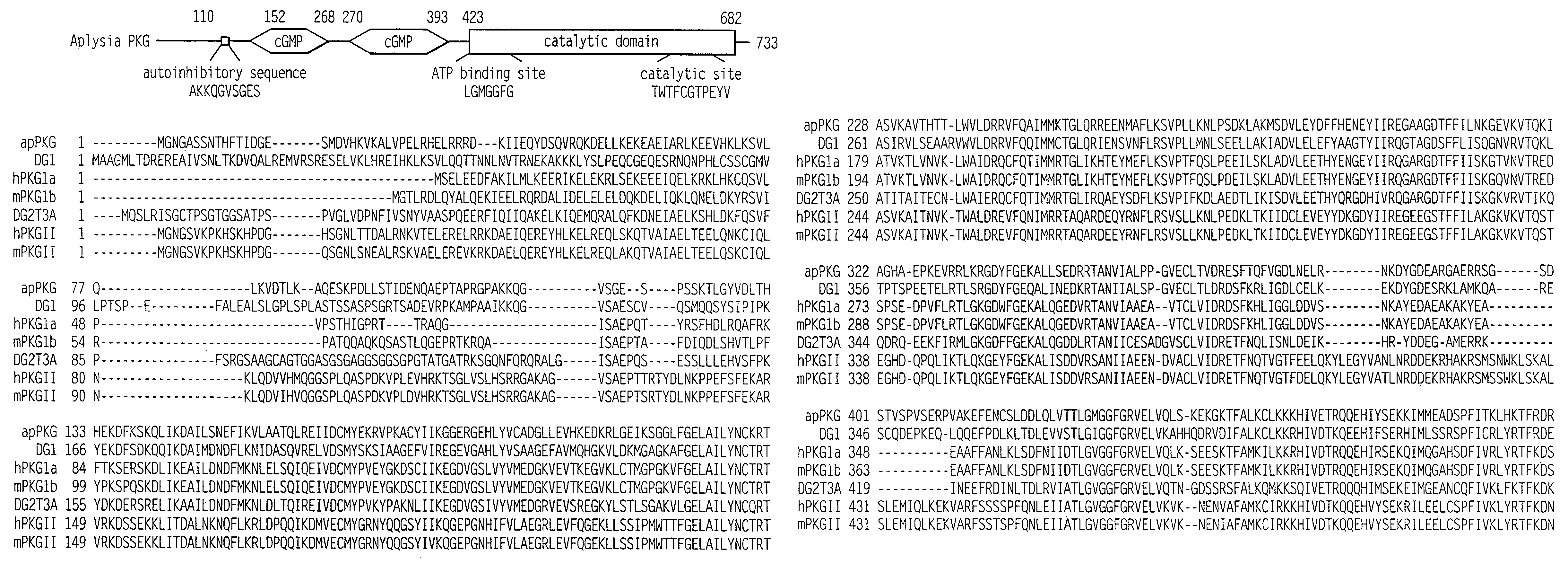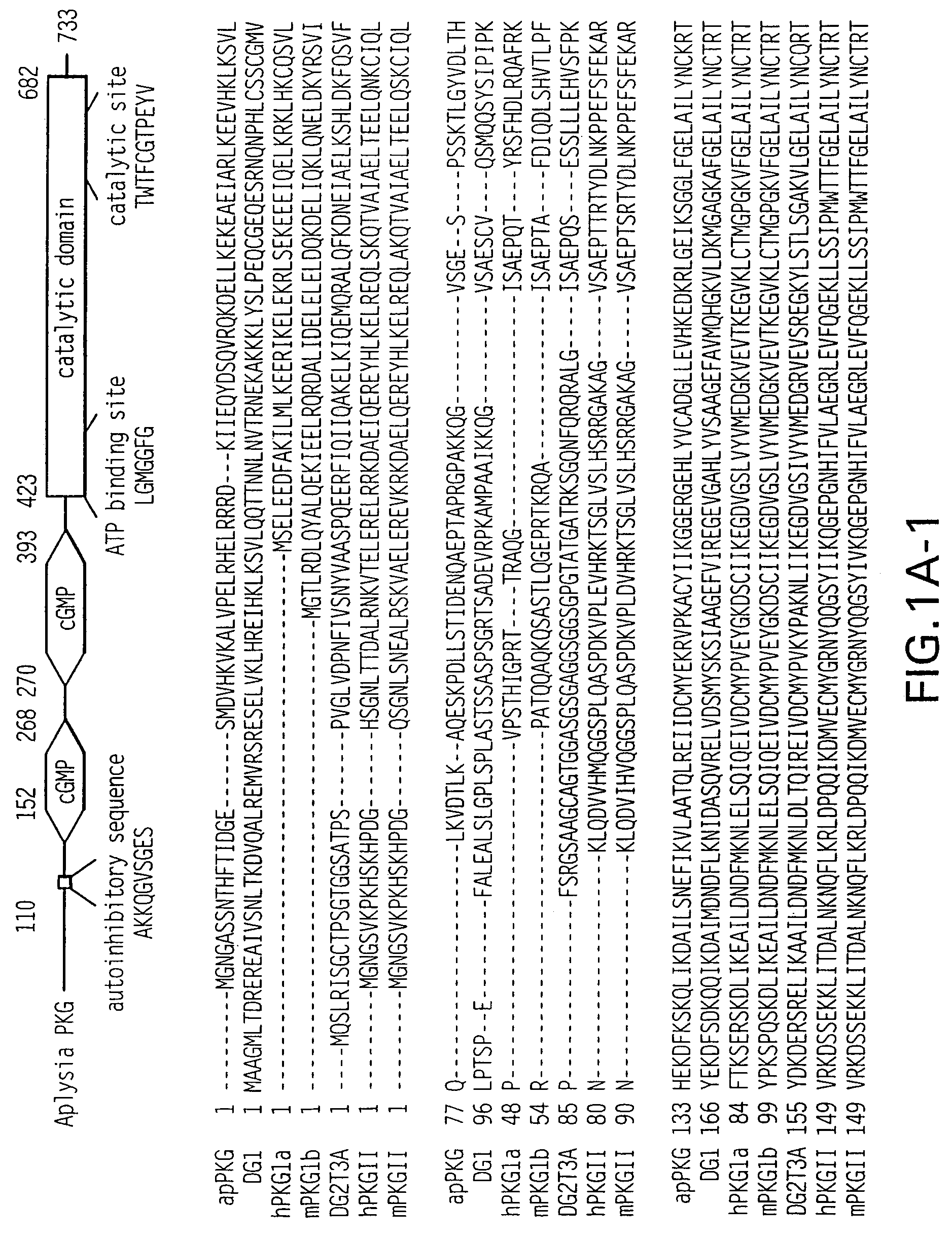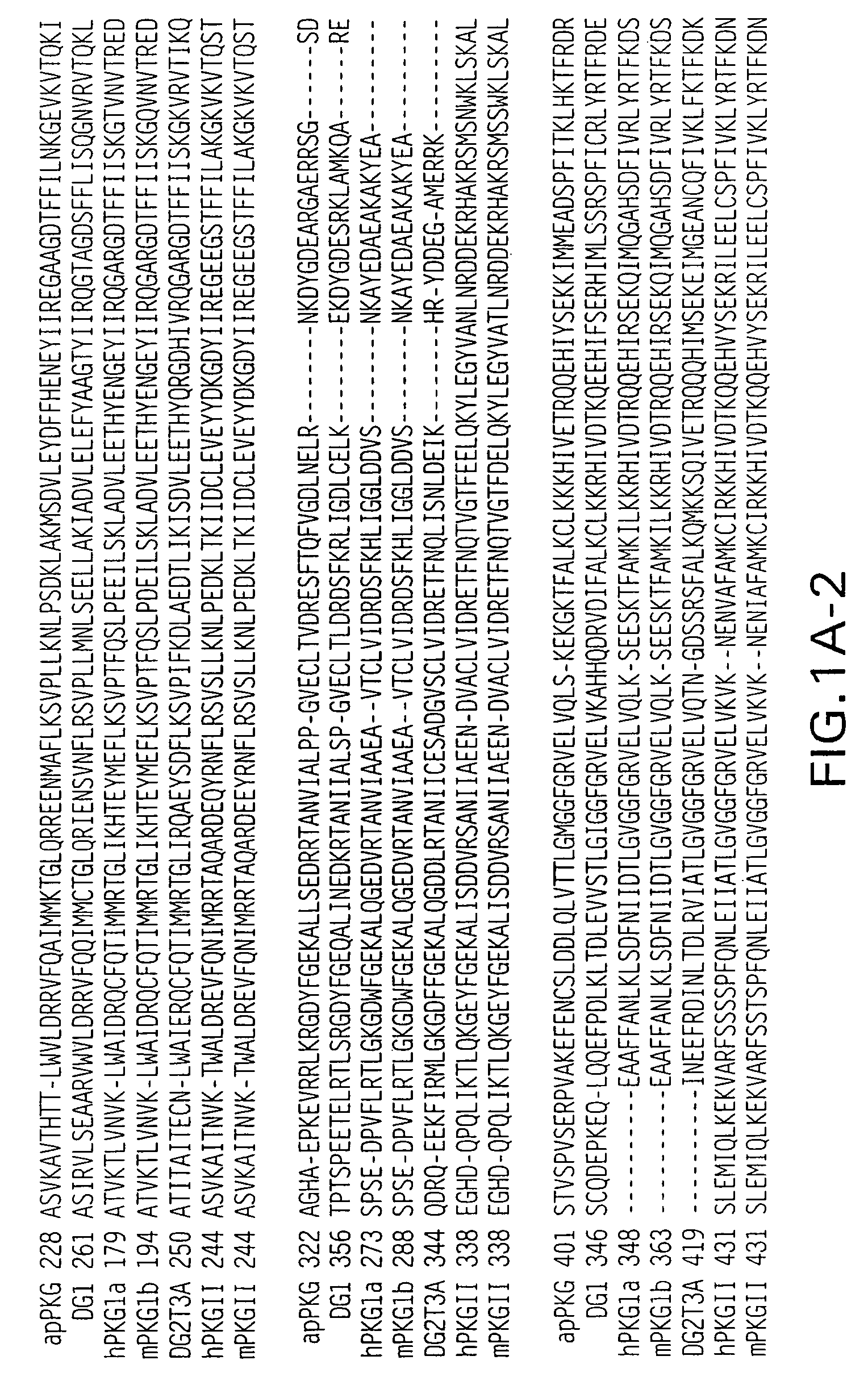Neuronal pain pathway
a neuronal and pain technology, applied in the field of neuronal pain pathway, can solve the problems of major clinical problems, persistent neuropathic pain is a major clinical problem, dull character of chronic pain, etc., and achieve the effects of increasing the activity of nitric oxide synthase (“no”), increasing the level of cyclic guanosine monophosphate, and increasing the activity of nitric oxide synthase (“no”)
- Summary
- Abstract
- Description
- Claims
- Application Information
AI Technical Summary
Benefits of technology
Problems solved by technology
Method used
Image
Examples
Embodiment Construction
[0030]For clarity of description, and not by way of limitation, this section is divided into the following subsections:[0031](i) the NO / cGMP / PKG pathway;[0032](ii) assays for identifying modulators of the NO / cGMP / PKG pathway; and[0033](iii) modulating the NO / cGMP / PKG pathway;[0034](iv) modulation of pain pathways by utilizing neuronal retrograde transport mechanisms; and[0035](v) apPKG.
5.1 The NO / cGMP / PKG Pathway
[0036]The present invention provides a model for the induction of LTH and / or persistent pain in which nerve injury activates neuronal nitric oxide synthase (“nNOS’) in the axon, leading to NO production, resulting in the activation of soluble guanylyl cyclase (“GC”), the formation of cyclic guanosine monphosphate (“cGMP”), and the activation of protein kinase G (“PKG”). Activated PKG is retrogradely transported to the cell body of the sensory neurons (SNs) where it activates MAPK-erk in the cytoplasm, which then enters the nucleus and activates transcription of genes respons...
PUM
| Property | Measurement | Unit |
|---|---|---|
| threshold current | aaaaa | aaaaa |
| threshold current | aaaaa | aaaaa |
| threshold current | aaaaa | aaaaa |
Abstract
Description
Claims
Application Information
 Login to View More
Login to View More - R&D
- Intellectual Property
- Life Sciences
- Materials
- Tech Scout
- Unparalleled Data Quality
- Higher Quality Content
- 60% Fewer Hallucinations
Browse by: Latest US Patents, China's latest patents, Technical Efficacy Thesaurus, Application Domain, Technology Topic, Popular Technical Reports.
© 2025 PatSnap. All rights reserved.Legal|Privacy policy|Modern Slavery Act Transparency Statement|Sitemap|About US| Contact US: help@patsnap.com



